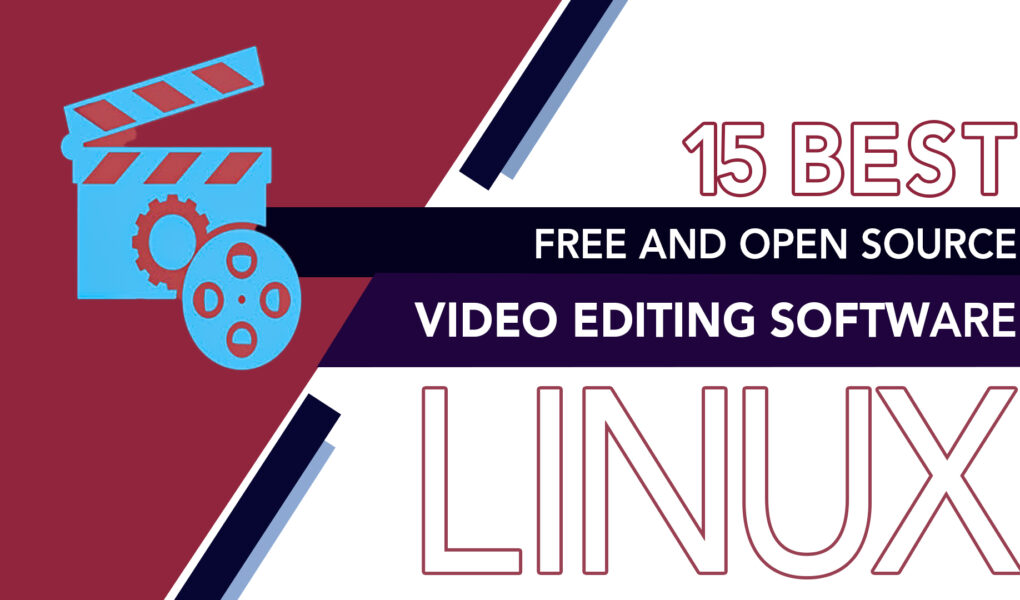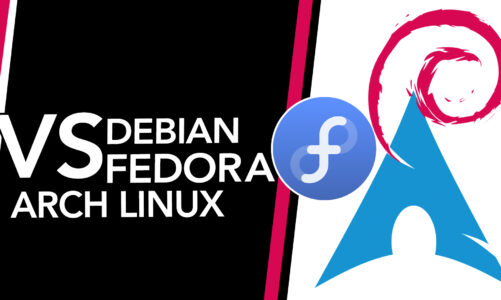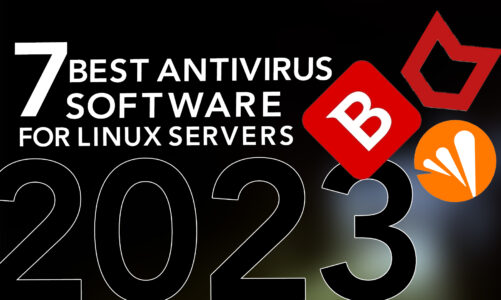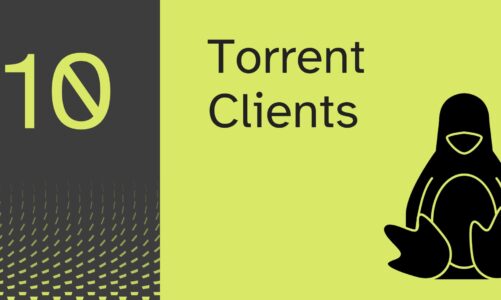Video content has emerged as an indispensable element of our day-to-day life, encompassing everything from social media snippets, promotional material, and advertisements to full-length movies. However, creating and editing videos can be an expensive and time-consuming process. That’s where free and open-source video editing software comes for help. But again, with a bundle of a variety of software programs available, users find it hard to select the one that can fulfill their video editing needs.
Not to be worried, the following section compiles a list of 15 free and open-source video editing software that can cater to a wide range of needs!
15 Best Free and Open Source Video Editing Software
Whether you’re a professional filmmaker or a social media content creator, there’s a free and open-source video editing software on this list that’s been there for you to try. Let us now delve in and examine further!
1: Blender
Although it was initially created as a 3D animation suite, it has since evolved into an all-in-one tool that includes a fantastic video editor app.
Blender’s video editor is intuitive and easy to navigate, catering to both beginners and advanced users. Users can undertake basic actions such as video trimming and splicing, or more intricate tasks like video masking. This versatility allows Blender to be used in a range of settings, from professional video production to personal video editing projects.
With its live preview, luma waveform, chroma vectorscope, and histogram displays, this software empowers users to monitor and make real-time edits to their footage. The software also includes audio mixing, syncing, scrubbing, and waveform visualization, which enables users to perfect the audio aspect of their videos.
Additionally, Blender offers up to 32 slots for adding video, images, audio, and effects, providing great flexibility for users.
Pros
- Flexible video editing capabilities for beginners and advanced users
- User-friendly and intuitive interface
- Completely free and open-source
Cons
- Most of the tutorials available online focus on the 3D animation
2: Kdenlive
KDEnlive is compatible with multiple platforms, including Microsoft Windows and Mac OS, and offers a wide range of support for various file formats. The software’s flexible layout and proxy video editing feature give users a lot of freedom in their editing workflows. It comes with a good collection of presets and templates, making it easy to achieve professional-looking results.
Despite its professional-level feature set, KDEnlive’s user interface is familiar and accessible, making it an excellent choice for absolute beginners as well.
Pros
- Free and open-source
- Professional-level features
- Familiar and accessible user interface
- Good collection of presets and templates
Cons
- It can be slow without GPU-supported acceleration
3: OpenShot
OpenShot takes video editing to the next level by providing unlimited layers and audio mixing capabilities.
It carries a wide array of features that enable users to perform a range of actions on their video clips, such as resizing, scaling, trimming, snapping, rotating, and cutting. Moreover, users can include video transitions that provide live previews, compositing, image overlays, watermarks, title templates, subtitles, and even 3D animated titles.
This free video editor strikes a perfect balance between advanced features and simplicity, making it an excellent option for users who are just starting with video editing.
Pros
- The advanced timeline features for greater precision
- Real-time previews of transitions
- User-friendly and intuitive interface
Cons
- Some stability issues when working with larger projects
4: LightWorks
This software offers a range of useful features that can help you create high-quality footage, including high-precision video trimming and multicam support. The highlight of Lightworks is its support for 4K video in a variety of formats.
In addition to its impressive feature set, Lightworks has a user-friendly interface that’s highly customizable to suit your individual needs. The software’s advanced features may prove to be too complex for certain users with less experience in video editing.
Pros
- User-friendly interface
- Supports 4K video
- Multicam support
Cons
- 4K video support requires the paid version
5: VidCutter
VidCutter is ideal for beginners or anyone seeking to perform specific editing functions, such as video cutting, without the complexities of a more advanced editor. It is compatible with Microsoft Windows, Mac OS, and Linux, making it a versatile cross-platform tool that can be used by a diverse range of users.
VidCutter’s suite of basic editing functions, including cutting and trimming, is supported by its ability to handle different video file formats. This enables users to easily work with their video files without the hassle of worrying about compatibility issues.
Pros
- Sleek and intuitive interface
- Fast and efficient video trimming and merging
- Basic editing functions like cutting and trimming
- Easy drag-and-drop functionality
Cons
- Limited advanced editing features
6: Shotcut
As an open-source program, all of Shotcut’s features are available without the necessity for a paid upgrade.
Although Shotcut boasts a variety of impressive features and helpful tutorial videos, the interface may feel somewhat unconventional to some users due to its original design for Linux.
Despite this, the software maintains its status as a high-quality video editor with numerous practical tools. It’s rare to find a free video editor that offers support for 4K resolution, making Shotcut an excellent option for anyone who needs high-quality videos.
Pros
- Native timeline editing and 4K support
- Compatible with Windows, Mac, and Linux
- No need to import videos
Cons
- Quirky interface
7: OBS Studio
A robust suite for video recording, editing, and sharing, Open Broadcaster Software (OBS) Studio is an impressive open-source option. It provides users with a wide range of features, including a robust screen capture tool with exceptional performance that makes it a go-to choice for gamers and YouTubers.
OBS Studio’s streamlined and user-friendly interface facilitates the production of professional-grade videos for users. Although it offers only surface-level video editing options, the software offers all the basic video editing tools built-in.
Pros
- Robust screen capture tool
- All basic video editing tools built-in
- One platform for recording, editing, and streaming videos
- Compatible with Microsoft Windows, Mac OS, and Linux
Cons
- Can be resource-intensive during the use
8: DaVinci Resolve
With its advanced capabilities in trimming, multicam editing, color correction, and audio mastering, DaVinci Resolve stands out as a highly sophisticated video editing software that is hard to match. Despite its professional-grade capabilities, DaVinci Resolve’s interfaces are user-friendly, making it an excellent option for both novice and experienced editors.
DaVinci Resolve has the ability to not only slice and trim videos but also to master audio and correct color.
While the comprehensive set of features in DaVinci Resolve may be too extensive for those who only need to trim and upload videos, it’s an excellent choice for more advanced projects.
Pros
- Versatile file support
- Collaborative editing
- Title creation tools
- Professional-grade color grading
Cons
- High system requirements
9: Flowblade
Flowblade’s key strength is its lightweight design, which requires less system resources than many other video editing programs. With its efficient performance, it offers multi-track video editing, keyframe video editing, and other advanced features that are essential for professional-quality video production.
It’s simple and attractive layout makes it an excellent choice for beginners, while its quick processing speed and powerful features are appreciated by more advanced users.
Pros
- Eye-catching layout that encourages learning
- Quick processing speed
- Advanced features like multi-track and keyframe video editing
- Requires less system resources
Cons
- Only available on Linux-based systems
10: Avidemux
The software’s intuitive interface makes it one of the best video editing tools for those who are just starting their editing journey. It allows users to perform fundamental editing tasks like cutting, encoding, and filtering with ease.
The Avidemux has an easy-to-use interface, which means that users can carry out basic editing tasks without having to spend time poring over technical documentation.
Pros
- Suitable for video editing learners
- Performs basic editing tasks like cutting, encoding, and filtering with ease
- Accessible to everyone with no technical documentation required
- Free and open-source
Cons
- Lack advanced features
11: VirtualDub
VirtualDub is a video editing program that provides precise video trimming, which is achieved through fractioning frames. Additionally, it can decompress and recompress videos, and it supports AVI containers. In addition to the capability to open DML files, the software also comes equipped with a hex editor.
It should be pointed out that VirtualDub has certain restrictions, namely that it lacks support for video editing of 4K videos and is exclusively accessible to users of Windows operating systems.
Pros
- Precise trimming and capture
- Uses AVI container format
- Inbuilt hex editor
- Supports open DML files
Cons
- No 4K editing
12: Pitivi
Pitivi is an exceptionally versatile video editing tool with support for all video formats. Its user interface is friendly and supportive, and its independent and framerate-based timeline appearance enables precise video editing.
With a vast array of transitions, effects and filter presets, Pitivi may lack some of the more trending and advanced controls, but it is still the go-to tool for users who require precise video modification.
Pitivi’s real-time preview feature is a highlight, providing users with the ability to see changes in real time as they make modifications to their videos.
Pros
- Loads of transitions, effects, and filter presets
- Compatible with Linux
- Quick video editing and processing capabilities
Cons
- May not be the best choice for advanced video editing projects
13: NATRON
Natron is designed for experienced users who seek to personalize their video effects, and it offers an extensive library of cross-platform VFX effects. These effects can be fine-tuned and tailored to meet the user’s specific needs, enabling them to create immersive effects that are unique and personalized.
Natron’s multi-layer track editing is another feature that sets it apart from other open-source video editors. It makes it easy to create complex video projects by allowing users to combine and edit multiple layers of video, images, and audio tracks.
Pros
- Large collection of customizable VFX effects
- Multi-layer track editing
- Professional-grade features
- Cross-platform compatibility
Cons
- Resource-intensive software
14: InVideo
InVideo provides a comprehensive array of video editing functionalities, encompassing audio tools, brand and text overlays, collaboration capabilities, speed adjustment, split and merge operations, support for HD resolution, and video stabilization.
The remarkable features of this program, such as intelligent frames, automated voice-overs, and other tools, make it stand out from other video editing software. The software’s desktop compatibility and constant updates with high-quality templates make it a great choice for both beginners and professionals.
Pros
- Excellent customer service
- Cost-effective option for video editing
- Features intelligent frames and automated voice-overs
Cons
- Not an all-in-one 360 video editor
15: VideoPad
VideoPad offers 3D video editing and camera shake reduction features that can help you create professional-looking videos of the highest quality.
The most impressive aspect of VideoPad is its vast selection of pre-made transitions, which can instantly elevate the look and feel of your videos with minimal effort. Furthermore, the software’s ability to export movies in various resolutions allows for easy sharing of your creations with others.
Its straightforward interface and user-friendly features make it perfect for beginners who are starting to play around with video compositions. However, advanced video editors may find it too basic for their needs.
Pros
- Wide range of video format support
- Robust features for social media exporting
- Pre-made transitions and sound effects library
Cons
- May be too basic for advanced video editors
Conclusion
The world of video editing software is vast, and with so many options available, it can be overwhelming to decide which one to choose. However, with the abundance of free and open-source video editing software, some of which are listed above, you can achieve your video editing goals without the need for expensive licensing fees or other restrictions.



